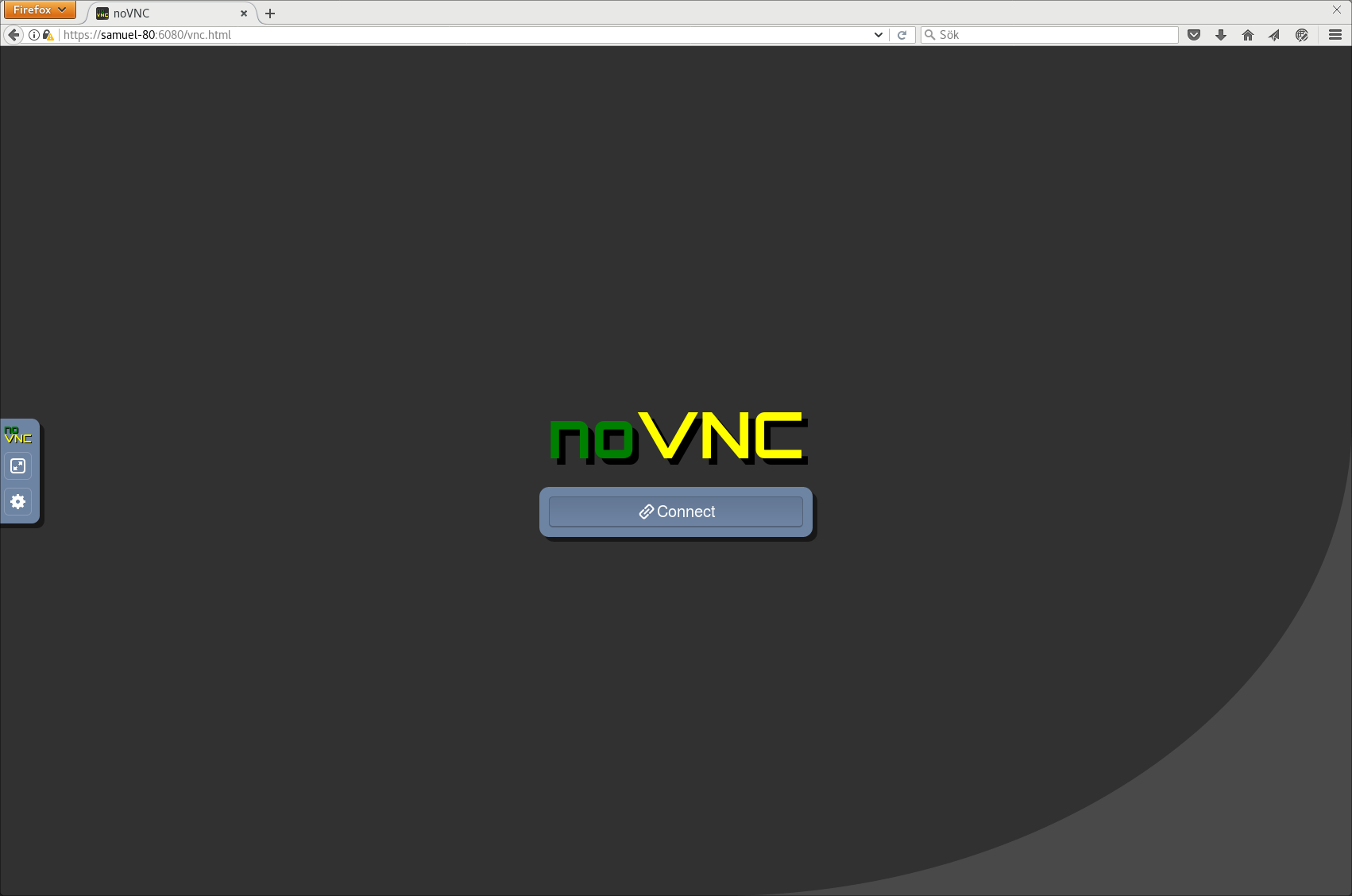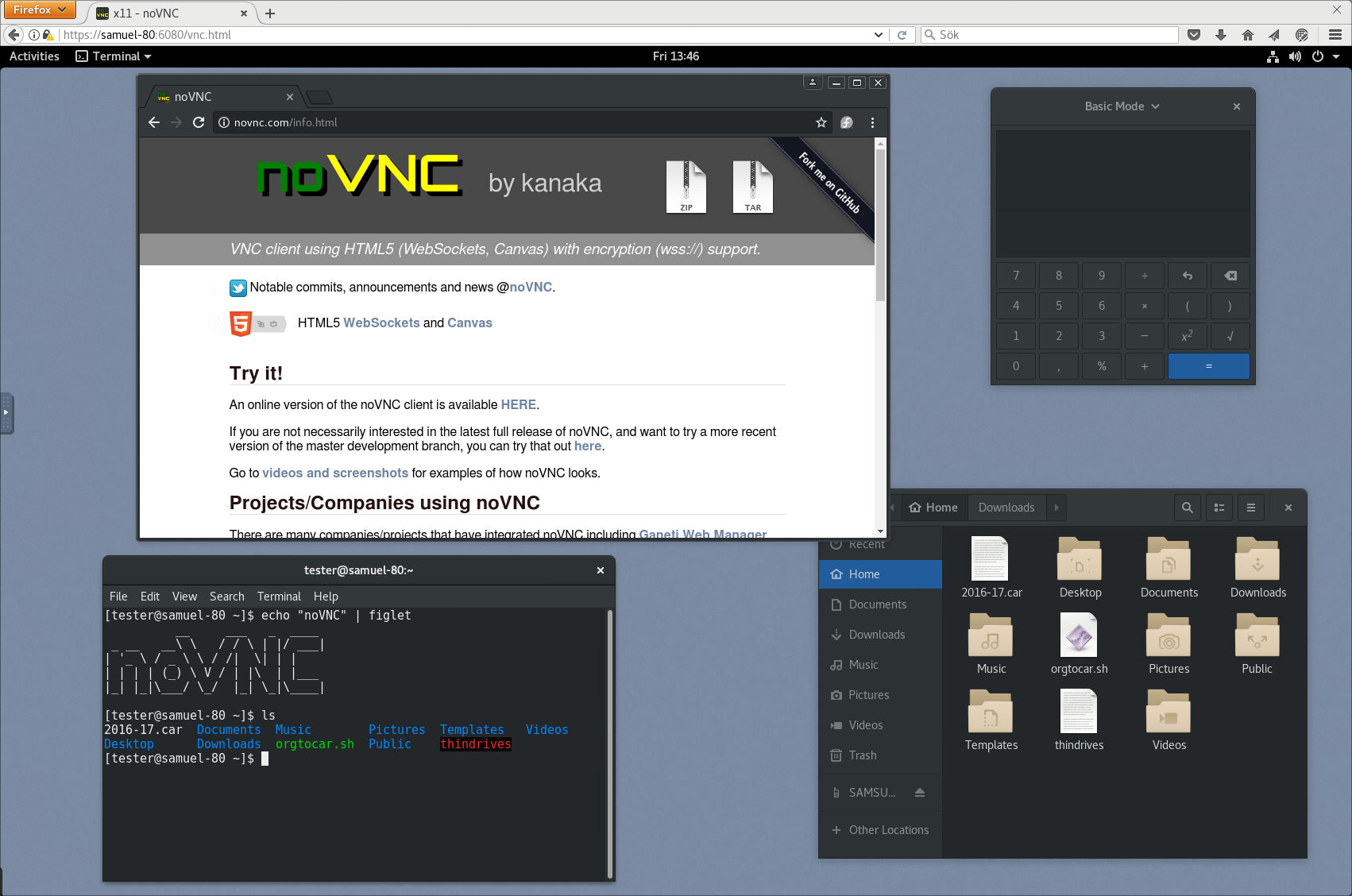noVNC is a HTML5 VNC client that runs well in any modern browser including mobile browsers (iOS and Android).
Many companies, projects and products have integrated noVNC including OpenStack, OpenNebula, LibVNCServer, and ThinLinc. See the Projects and Companies wiki page for a more complete list with additional info and links.
The project website is found at novnc.com. Notable commits, announcements and news are posted to @noVNC.
If you are a noVNC developer/integrator/user (or want to be) please join the noVNC discussion group.
Bugs and feature requests can be submitted via github issues. If you are looking for a place to start contributing to noVNC, a good place to start would be the issues that are marked as "patchwelcome".
If you want to show appreciation for noVNC you could donate to a great non- profits such as: Compassion International, SIL, Habitat for Humanity, Electronic Frontier Foundation, Against Malaria Foundation, Nothing But Nets, etc. Please tweet @noVNC if you do.
- Supports all modern browsers including mobile (iOS, Android)
- Supported VNC encodings: raw, copyrect, rre, hextile, tight, tightPNG
- WebSocket SSL/TLS encryption (i.e. "wss://") support
- 24-bit true color and 8 bit colour mapped
- Supports desktop resize notification/pseudo-encoding
- Local or remote cursor
- Clipboard copy/paste
- Clipping or scolling modes for large remote screens
- Easy site integration and theming (3 example themes included)
- Licensed under the MPL 2.0
Running in Firefox before and after connecting:
See more screenshots here.
-
Chrome 8, Firefox 4, Safari 6, Opera 12, IE 11, Edge 12, etc.
-
HTML5 Canvas, WebSockets and Typed Arrays
-
Fast Javascript Engine: this is not strictly a requirement, but without a fast Javascript engine, noVNC might be painfully slow.
-
See the more detailed browser compatibility wiki page.
Unless you are using a VNC server with support for WebSockets connections (such as x11vnc/libvncserver, QEMU, or MobileVNC), you need to use a WebSockets to TCP socket proxy. There is a python proxy included ('websockify').
-
Use the launch script to start a mini-webserver and the WebSockets proxy (websockify). The
--vncoption is used to specify the location of a running VNC server:./utils/launch.sh --vnc localhost:5901 -
Point your browser to the cut-and-paste URL that is output by the launch script. Enter a password if the VNC server has one configured. Hit the Connect button and enjoy!
-
Modules/API - The library modules and their Javascript API.
-
Integration - Get noVNC to work in existing projects.
-
Troubleshooting - How to troubleshoot problems.
-
Encrypted Connections - Setup websockify so that you can use encrypted connections from noVNC.
-
Advanced Usage - Generating an SSL certificate, starting a VNC server, advanced websockify usage, etc.
-
Testing - Run and write tests.
-
Translations - Add and modify localization for JavaScript and HTML.
-
Core team:
- Joel Martin
- Samuel Mannehed (Cendio)
- Peter Åstrand (Cendio)
- Solly Ross (Red Hat / OpenStack)
- Pierre Ossman (Cendio)
-
Notable contributions:
- UI and Icons : Pierre Ossman, Chris Gordon
- Original Logo : Michael Sersen
- tight encoding : Michael Tinglof (Mercuri.ca)
-
Included libraries:
- as3crypto : Henri Torgemane (code.google.com/p/as3crypto)
- base64 : Martijn Pieters (Digital Creations 2), Samuel Sieb (sieb.net)
- DES : Dave Zimmerman (Widget Workshop), Jef Poskanzer (ACME Labs)
- Pako : Vitaly Puzrin (https://github.com/nodeca/pako)

